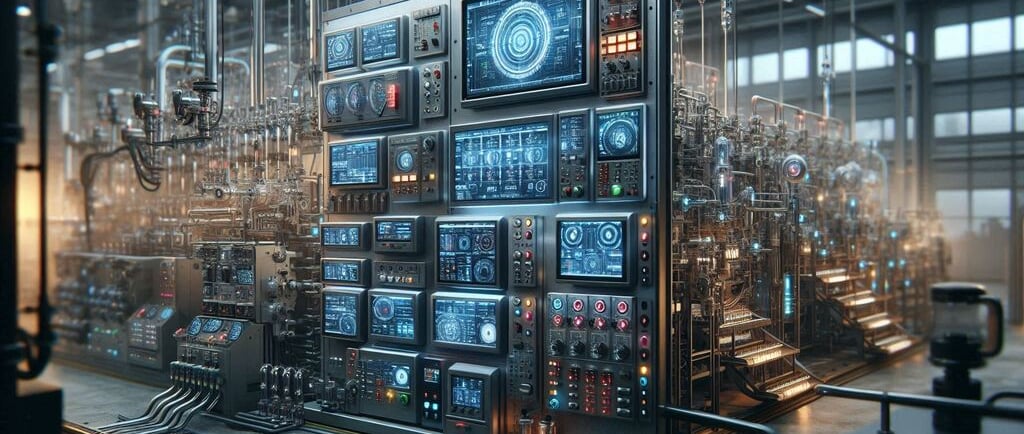Let us collaborate to foster global growth and development together.
Automation and Control Systems
Discover the essentials of automation and control systems and how they revolutionize industries. Learn about their benefits, applications, and future trends in this informative article!
11/16/20074 min read


Discover the essentials of automation and control systems and how they revolutionize industries. Learn about their benefits, applications, and future trends in this informative article!
Automation and Control Systems: Revolutionizing Efficiency and Precision
In today’s fast-paced world, the need for smarter, more efficient systems has never been greater. Automation and control systems have become essential tools in industries ranging from manufacturing to energy and transportation. By streamlining operations and enhancing precision, these systems not only improve productivity but also lower costs and ensure safety. Let’s take a deep dive into how automation and control systems work, their key benefits, and where they're headed in the future.
What Are Automation and Control Systems?
Before we explore how automation and control systems impact various sectors, let’s start with understanding what they are. These systems are used to automatically monitor and control processes in industries like manufacturing, power generation, and HVAC (Heating, Ventilation, and Air Conditioning).
At the core, an automation system uses devices such as sensors, actuators, and controllers to perform tasks without human intervention. On the other hand, control systems focus on adjusting variables such as temperature, pressure, or speed in a given process to ensure they stay within predefined limits.
Benefits of Automation and Control Systems
Increased Efficiency: Automation helps businesses speed up their operations by reducing the need for manual intervention, making processes faster and more reliable.
Cost Savings: Automation reduces labor costs and minimizes errors, which leads to savings in the long run.
Enhanced Safety: With systems automatically monitoring conditions, businesses can prevent hazardous situations, ensuring a safer work environment.
Improved Quality: By ensuring consistent performance, automation guarantees high-quality production outcomes.
These benefits make automation and control systems indispensable for modern industries.
The Impact of Automation and Control Systems Across Industries
Manufacturing and Production
In the manufacturing sector, automation is nothing short of a game-changer. By integrating automation systems, manufacturers can achieve high levels of precision and reduce errors that lead to waste. Automated assembly lines, such as those used by car manufacturers, are prime examples where automation boosts productivity. Tasks that previously required human workers can be efficiently performed by robotic arms, conveyors, and machines.
Additionally, control systems within these automated settings ensure that every component is produced to the correct specifications, minimizing the need for quality control adjustments post-production.
Energy Sector
The energy industry benefits greatly from automation and control systems, particularly in power plants and distribution networks. These systems help in monitoring and regulating energy production, distribution, and consumption in real-time. Advanced control systems can adjust the production output of power stations based on demand and environmental conditions, significantly improving energy efficiency.
Automation ensures that power grids maintain stability by quickly responding to power surges, outages, or other emergencies. This technology helps in reducing waste and providing a more consistent power supply to consumers.
Transportation and Logistics
In transportation, automation and control systems are helping make systems more efficient, safer, and reliable. For instance, automated control systems in traffic management help optimize the flow of vehicles, reduce congestion, and enhance road safety.
Moreover, the advent of autonomous vehicles is revolutionizing logistics, reducing the need for human drivers while improving delivery speed and safety. These vehicles rely on a combination of automation technologies like sensors, GPS, and AI to navigate, detect obstacles, and communicate with surrounding systems.
Key Components of Automation and Control Systems
To truly understand how automation works, we need to look at the essential components that make up these systems:
Sensors
Sensors are at the heart of every automation and control system. These devices collect data from the environment and send it to the system to interpret, process, and act on. For instance, in an industrial automation system, sensors might measure the temperature or pressure within machinery, providing feedback on the condition of the system.
Controllers
Once data is collected by sensors, it’s passed to controllers. A controller is responsible for analyzing the data and then deciding what action needs to be taken. It adjusts parameters such as speed, temperature, or pressure to keep processes within predefined limits. Common controllers include programmable logic controllers (PLCs), which have become an industry standard.
Actuators
Actuators are devices that actually carry out the command given by the controller. They control physical movements in machinery. For example, in an automated assembly line, actuators may control robotic arms that perform assembly tasks.
Future Trends in Automation and Control Systems
The Rise of AI and Machine Learning
As AI and machine learning technologies evolve, they are becoming integrated into automation and control systems to make them smarter and more adaptable. These technologies enable systems to not only respond to immediate changes but also learn from past data and optimize processes without human input.
For instance, predictive maintenance is an exciting application, where AI can analyze data from machinery to predict when a machine will fail before it actually happens. This reduces downtime and keeps systems running efficiently.
Industry 4.0 and IoT Integration
The fourth industrial revolution (Industry 4.0) is being powered by IoT devices, cloud computing, and smart systems. Automation and control systems in Industry 4.0 are becoming more interconnected, allowing for seamless data transfer between devices and systems. In real-time, machines are communicating and adjusting processes automatically, leading to higher efficiency and better resource management.
Conclusion: Embrace the Future of Automation and Control Systems
From manufacturing to energy and transportation, automation and control systems are leading the charge for innovation across industries. By improving efficiency, quality, and safety, these systems have become essential tools in today’s competitive market. The future of automation is bright, with technologies like AI and IoT continuing to transform industries and pave the way for smarter, more adaptable systems.
Stay ahead of the curve and explore the evolving world of automation and control systems in your industry. Whether you’re looking to improve operations or reduce costs, implementing the right automation solutions could be the key to your success.
Innovation
Cutting-edge solutions for industrial efficiency and productivity.
© 2024. All rights reserved.


